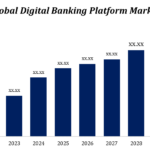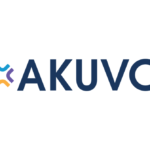Exploring Peer-to-Peer Lending: The Disruptive Force in the Financial Industry
Peer-to-peer (P2P) lending has emerged as a disruptive force in the financial industry, revolutionizing the way individuals and businesses access financing. By directly connecting borrowers with lenders through online platforms, P2P lending has introduced a more streamlined and inclusive approach to lending. In this blog, we will delve into the world of P2P lending, exploring its key characteristics, benefits, and impact on the financial landscape.
Understanding P2P Lending:
P2P lending, also known as marketplace lending, is a digital lending model that bypasses traditional financial institutions as intermediaries. Instead, it connects borrowers and lenders directly through online platforms, removing the need for a traditional banking intermediary. The platforms facilitate loan origination, credit assessments, and loan servicing, enabling individuals and businesses to access funding more efficiently.
Key Characteristics of P2P Lending:
- Online Platforms: P2P lending operates through online platforms that bring borrowers and lenders together. These platforms serve as intermediaries, providing a marketplace where borrowers can create loan listings and lenders can choose to invest in these loans.
- Borrower Diversity: P2P lending caters to a diverse range of borrowers, including individuals, small businesses, and even underserved populations who may face challenges accessing traditional bank loans. The platforms assess the creditworthiness of borrowers using alternative data sources and algorithms, allowing a broader pool of borrowers to seek funding.
- Investor Opportunities: P2P lending provides individuals and institutional investors with an opportunity to invest in loans and earn returns. Investors can diversify their portfolios by selecting loans with varying risk levels, interest rates, and loan terms.
- Risk and Credit Assessment: P2P lending platforms employ sophisticated credit assessment models to evaluate the creditworthiness of borrowers. They utilize data analytics, credit scoring algorithms, and alternative data sources to assess the risk associated with lending to individuals or businesses.
Benefits of P2P Lending:
- Increased Access to Financing: P2P lending provides borrowers with an alternative financing option, especially for those who may not meet traditional lending criteria. This increased accessibility expands opportunities for individuals and small businesses to obtain funding for various purposes, including debt consolidation, business expansion, education, or personal needs.
- Competitive Interest Rates: P2P lending introduces competition to the lending market, potentially resulting in lower interest rates for borrowers. With fewer intermediaries involved, borrowers may find more favorable terms and interest rates compared to traditional bank loans.
- Simplified Loan Application Process: P2P lending platforms offer a streamlined application process, leveraging digital technology and automation. Borrowers can complete applications online, providing necessary information and documents, and receive loan offers quickly. This efficiency accelerates the loan approval and disbursement process.
- Diversification for Investors: P2P lending allows investors to diversify their portfolios beyond traditional investment options. By investing in loans across various risk profiles, investors can potentially earn attractive returns while spreading their risk across multiple borrowers.
Impact on the Financial Industry:
P2P lending has significantly impacted the financial industry, introducing innovation, competition, and increased efficiency. It has challenged the traditional lending model by leveraging technology to streamline the lending process, reducing costs, and expanding access to capital. P2P lending has also influenced traditional banks to embrace digital transformation and adopt elements of the P2P lending model to enhance their own lending processes.
As P2P lending continues to grow, regulatory frameworks are evolving to ensure consumer protection, transparency, and stability within the industry. Regulatory bodies are working to strike a balance between encouraging innovation and mitigating potential risks, establishing guidelines for P2P lending platforms to operate responsibly.
Peer-to-peer lending has emerged as a disruptive force in the financial industry, reshaping the lending landscape and providing borrowers and investors with new opportunities. By leveraging online platforms and advanced credit assessment models, P2P lending offers increased access to financing, competitive interest rates, and simplified loan application processes. Its impact on the financial industry has stimulated innovation, encouraged digital transformation, and spurred competition within the lending sector. As P2P lending continues to evolve, it is essential for borrowers, investors, and regulatory bodies to stay informed and adapt to the changing dynamics of this transformative financial model.
































